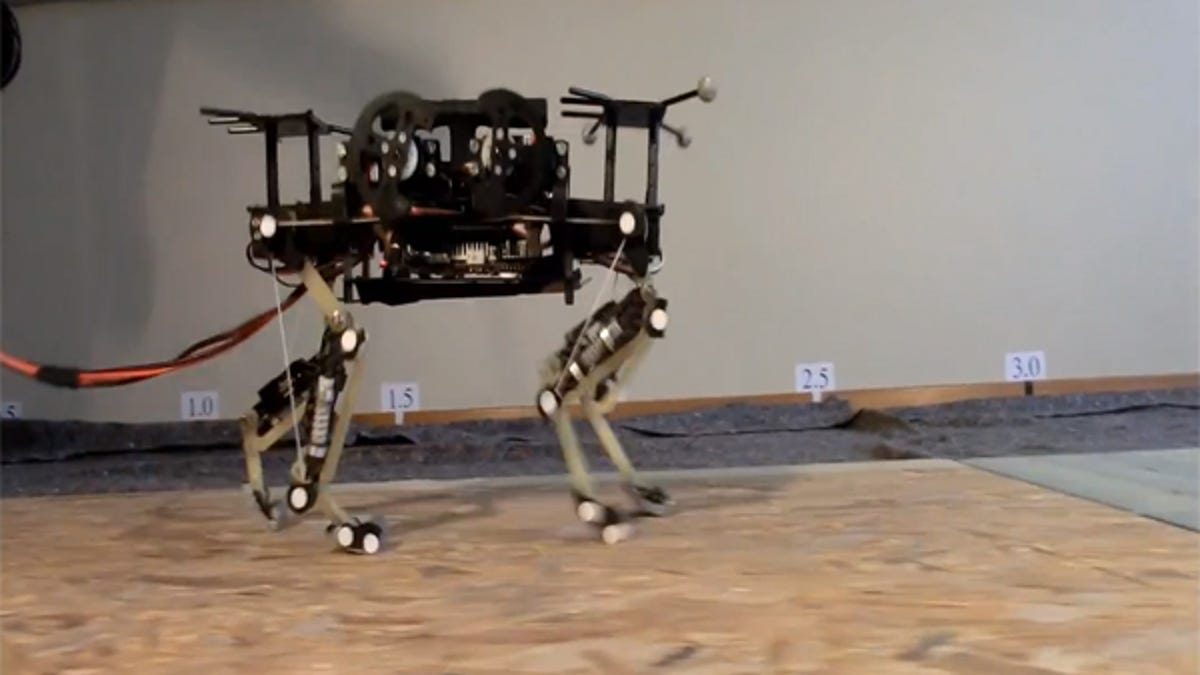Cheetah-Cub robot learns to walk from the animals
A quadruped robot developed at École Polytechnique Fédérale de Lausanne has been taught to walk by being fed data based on the movements of a horse.

(Screenshot by Michelle Starr/CNET Australia)
A quadruped robot developed at École Polytechnique Fédérale de Lausanne (EPFL) has been taught to walk by being fed data based on the movements of a horse.
We know that Boston Dynamics is keen on four-legged robots, even creating a cheetah of its very own. So is the EPFL in Switzerland; its Cheetah-Cub has been in development since 2008 at the Biorobotics Laboratory.
Teaching a quadruped robot to walk can be a tricky business, though. Something called a Central Pattern Generator (CPG) network is used to generate movements according to a repetitive pattern. But no matter how robust the rhythm of the movements is, this can be tricky to implement outside of a lab environment, where the ground won't necessarily always be even.
Enter the Italian Institute of Technology (IIT). The team at the IIT broke down the movements of horses via motion capture into what it calls "kinematic Motion Primitives" (kMP), analyses of the trajectories of limbs and bodies, translated into data that can be fed into a CPG.
IIT broke down the motions required for walking, trotting and galloping, creating cycled sequences for the cat-sized Cheetah-Cub to mimic on its spring-based limbs. It also developed transitional movements, so that the robot could move between each gait smoothly.
The results were varied. Walking and trotting seemed to go fine, but galloping was a little more awkward, as the robot doesn't have a flexible spine that can expand and contract over its legs, like the bunching of a real animal's body at top speed.
You can see it in action in the video below, and see the project paper online: "Horse-like walking, trotting, and galloping derived from kinematic Motion Primitives (kMPs) and their application to walk/trot transitions in a compliant quadruped robot".

